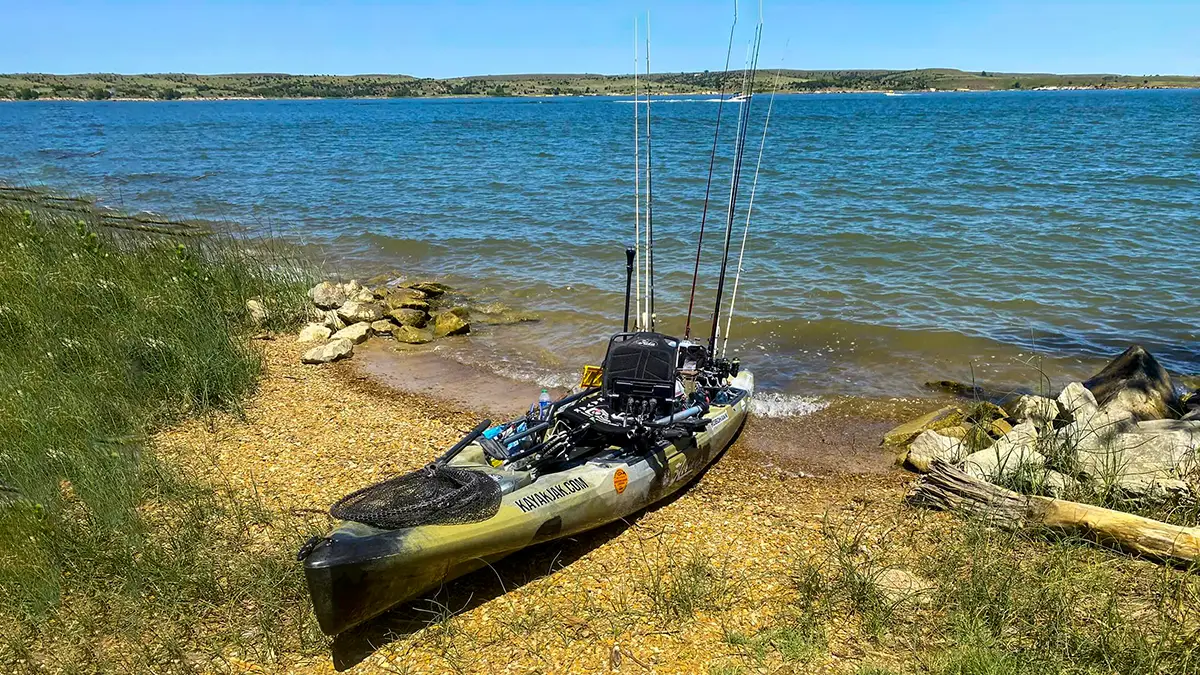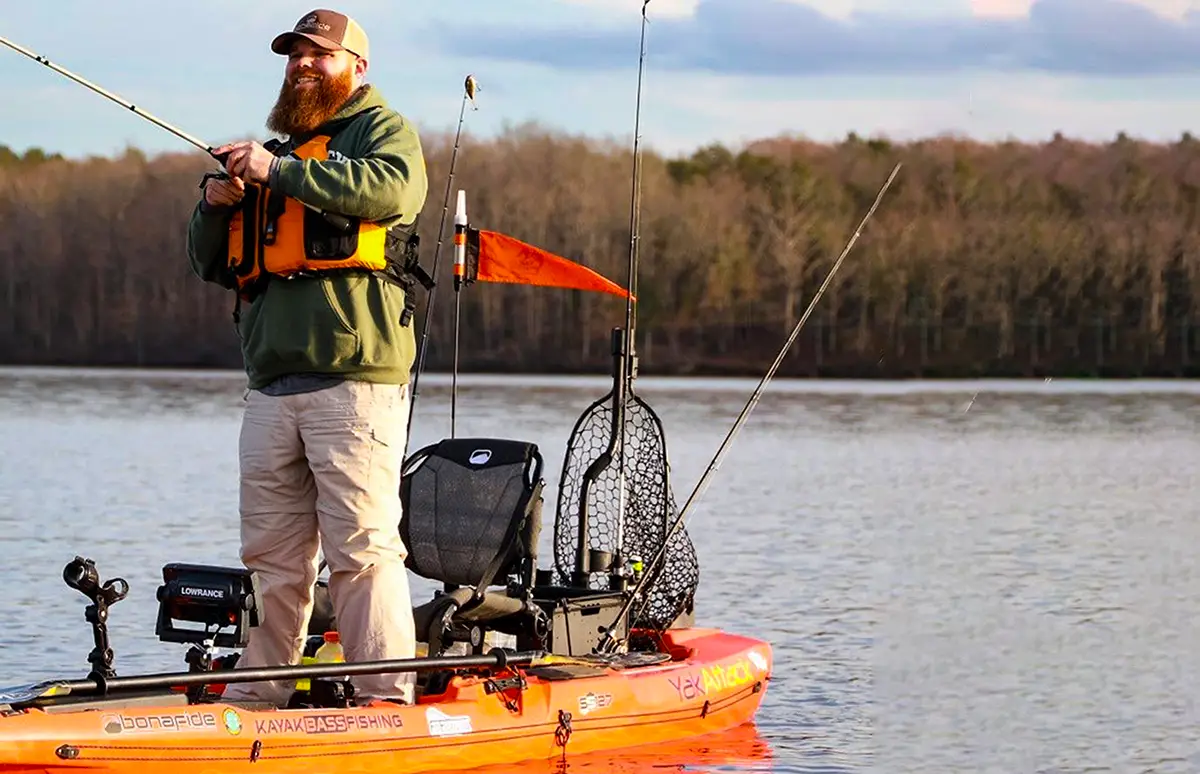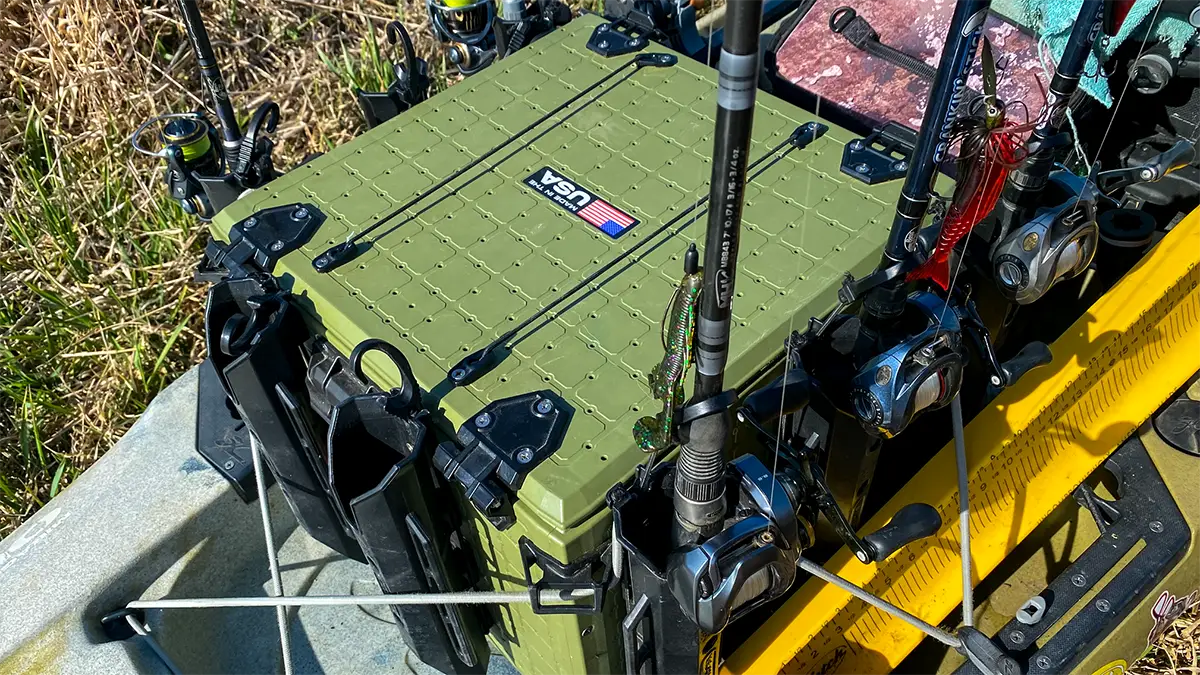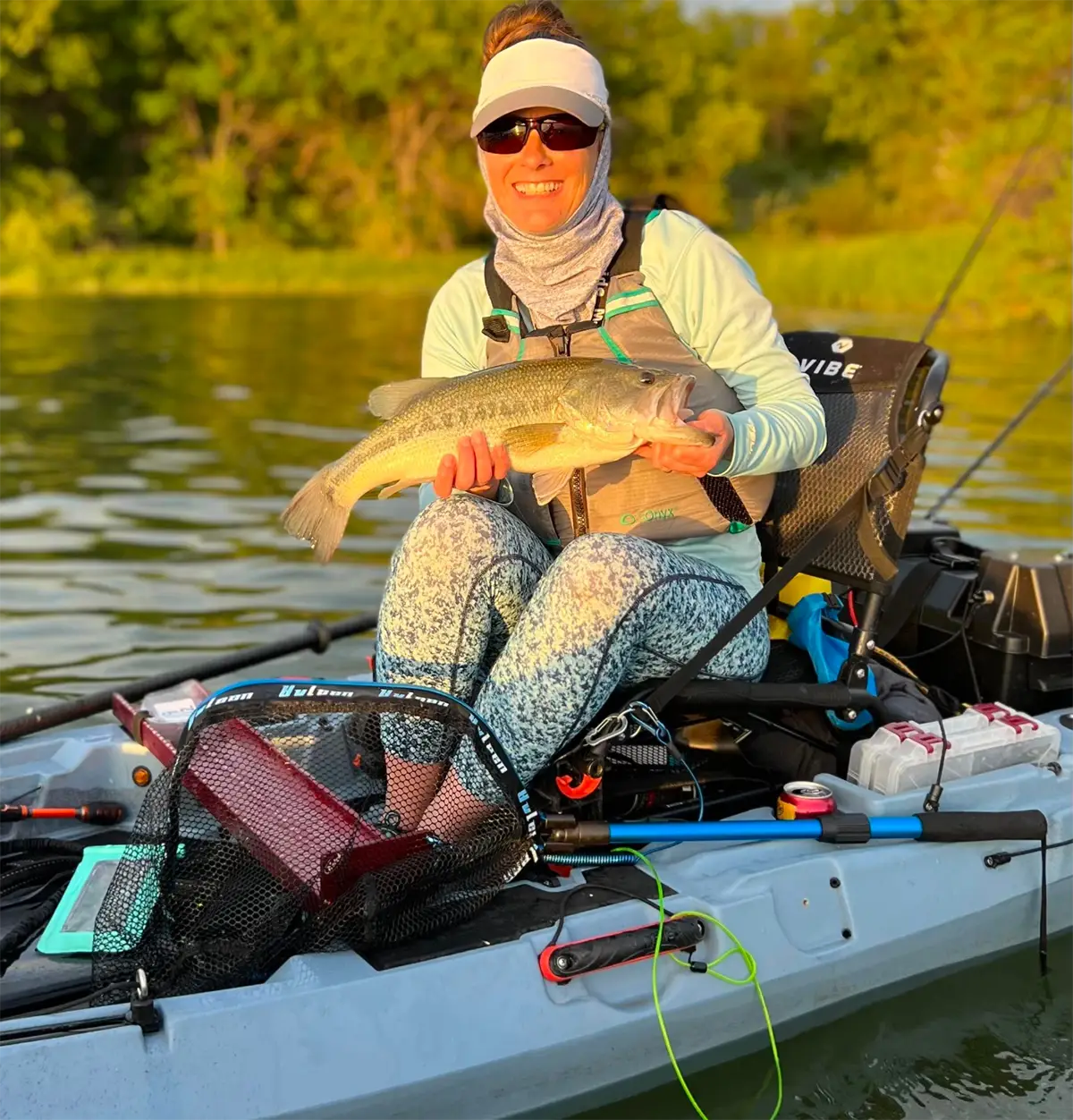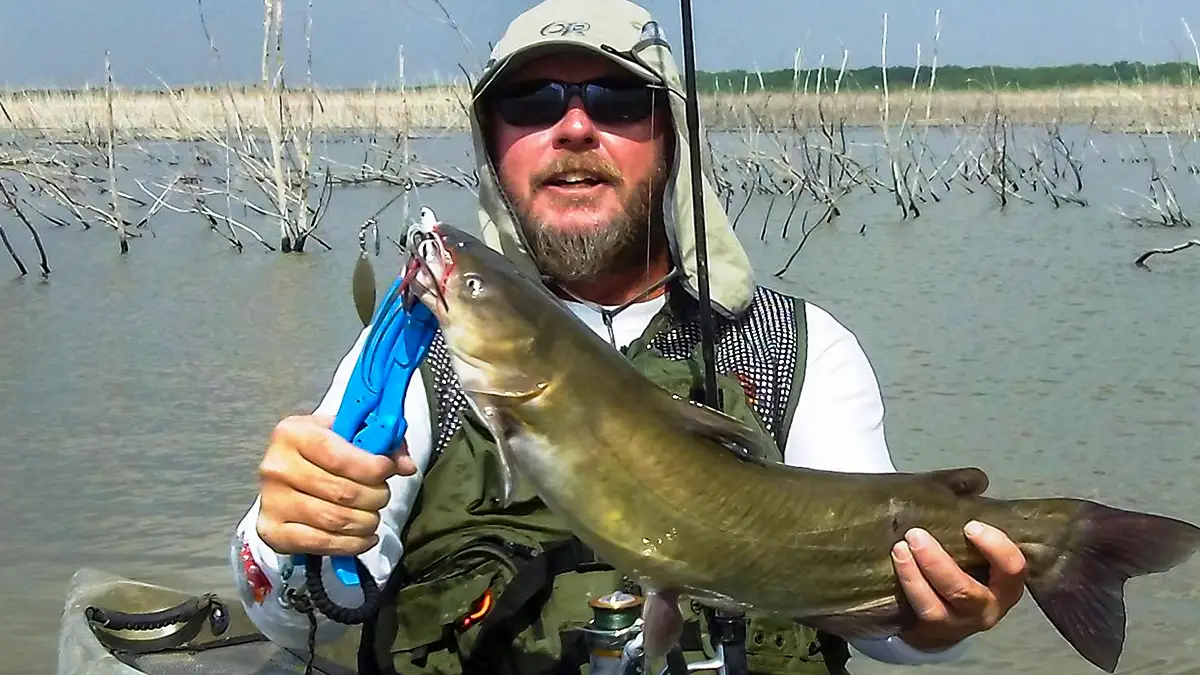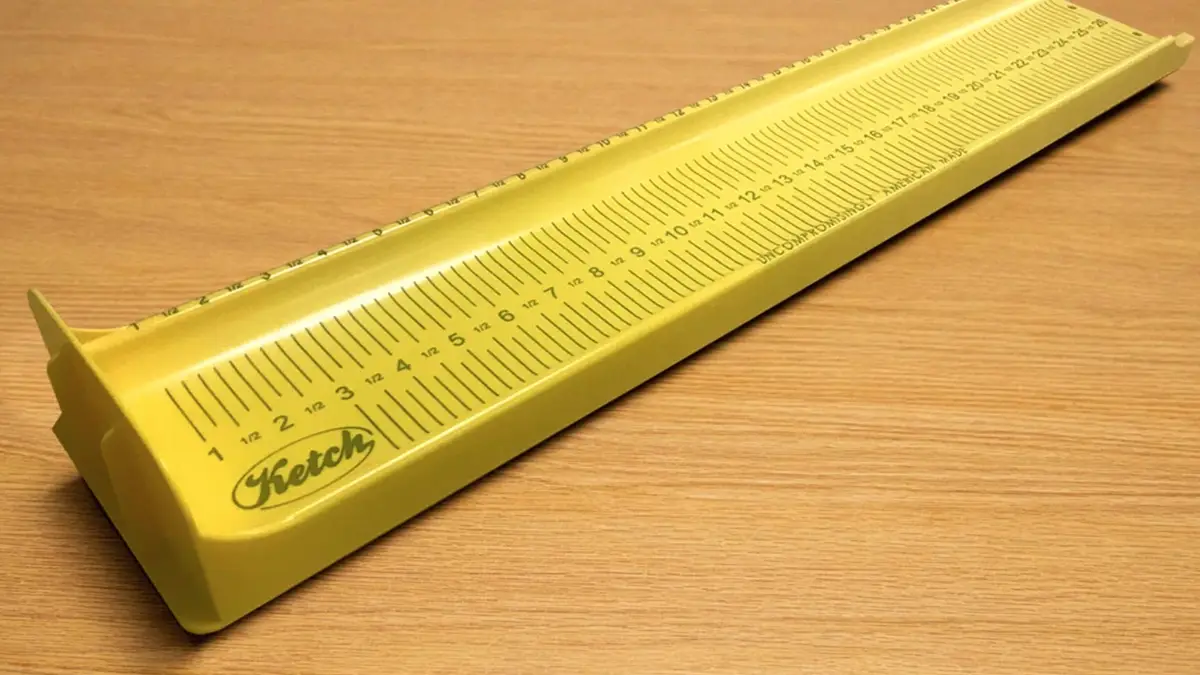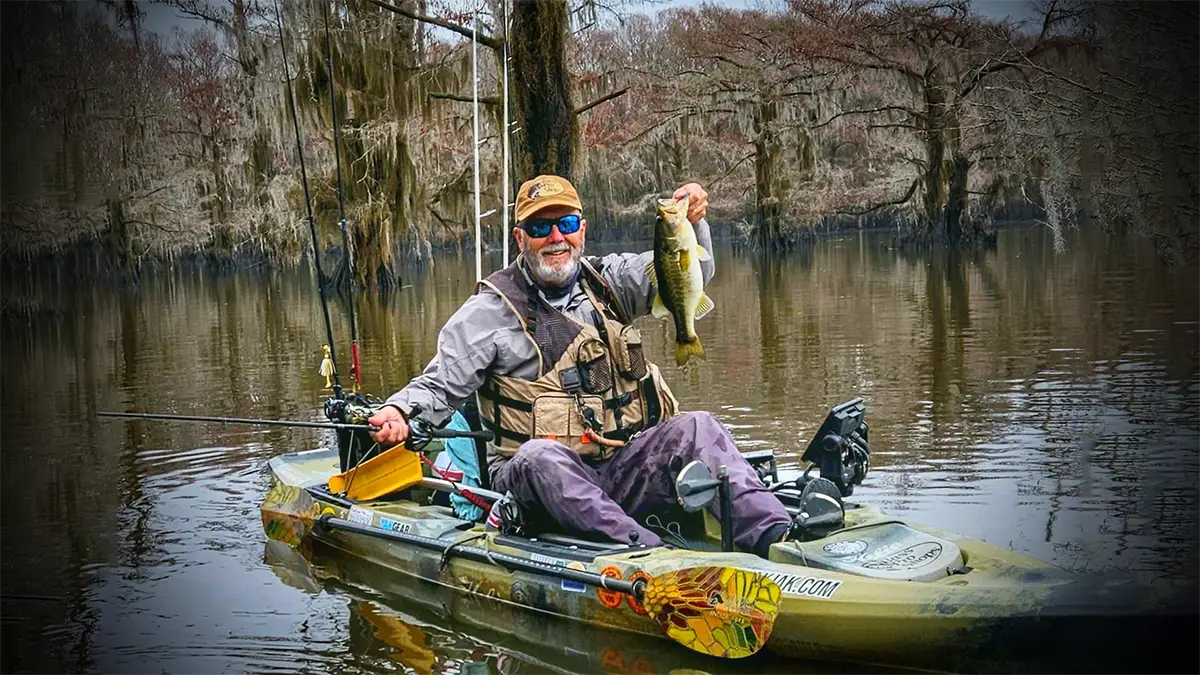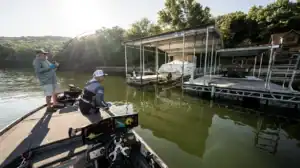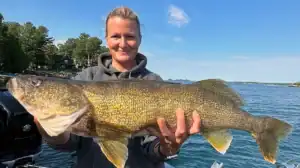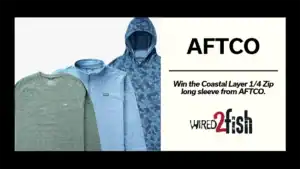After purchasing a fishing kayak that best fits you, there are some things to consider before putting it on the water. There are some essential items to take with you in preparation for safely landing fish and dealing with the elements while you experience your adventures. There are also items to consider that are not necessarily essential but a good idea to take along in unexpected circumstances. Some items are required by your state boating laws so it is a good idea to check up on those regulations. Also some of the recommendations are not particular to any certain brand, so just pick your favorite. They are simply recommendations to help make kayak fishing safer, more convenient or more efficient.
How I determined the recommendations below was through 25 years of experience while learning the struggles and finding good solutions to them. Fishing with others on the water has also provided learning opportunities for what should be our most important accessories needed to keep us safe and comfortable for long days on the water.
Best Kayak Accessories for Fishing
This article does not include fishing lures, or rods and reels. Those items will be discussed another day. To continually educate yourself on what is needed for a successful kayak fishing trip you can also research online, visit kayak shops, and attend nearby expos. We all have different budgets to invest in these items discussed, but I always recommend you buy the best for what your bucks will allow. You can also look at product ratings to see which is the best fit for you. But I will share some of my best finds as we go through the list.
We will cover several basic areas of recommendations to make your trips more successful. These include the following item categories:
- Safety and Navigation
- Apparel
- Storage
- Tethers
- Tools and Accessories
- Miscellaneous extras
Besides these items we will go over in this article you are going to absolutely need a kayak paddle and a kayak PFD which we have covered independently in other articles. If you plan to be on the water during darkness or low light hours, you will need a 360 degree navigation light.
Safety and Navigation
Life Jacket
Storms can hit quickly. A large branch could fall from above and knock an angler unconscious. Or just hitting something under the surface or a swift under current can cause your kayak to tip you out into the water. While capsizing seems to be the most common adversity kayak anglers face, a PFD will give you enough buoyancy to help you stay afloat as you return to the kayak or nearby shoreline. Read our comprehensive article on kayak life jackets.
Navigation Lights
There are several 360 Navigation lights out there on the market and two that come to mind are the YakAttack VISIPole II with gear track and Railblaza Visibility Kit II W/Miniport Tracmount models that are very durable and will meet the Coast Guard boating regulations.
Flag
An additional orange flag is a great idea, especially on busier lakes where you can be easily recognized with one waving in the wind. Both of these kits come with an attachable orange safety flag.
Whistle
If a dangerous situation comes up while on the water and there are people nearby, an emergency whistle should help with gaining the attention of those nearby. It is easy to keep attached to your PFD with a small lanyard and clip. The Fox 40 Micro Pealess Whistle with Lanyard is a great choice.
Depending on your budget you can add additional items to your kayak that will meet your needs while on the water.
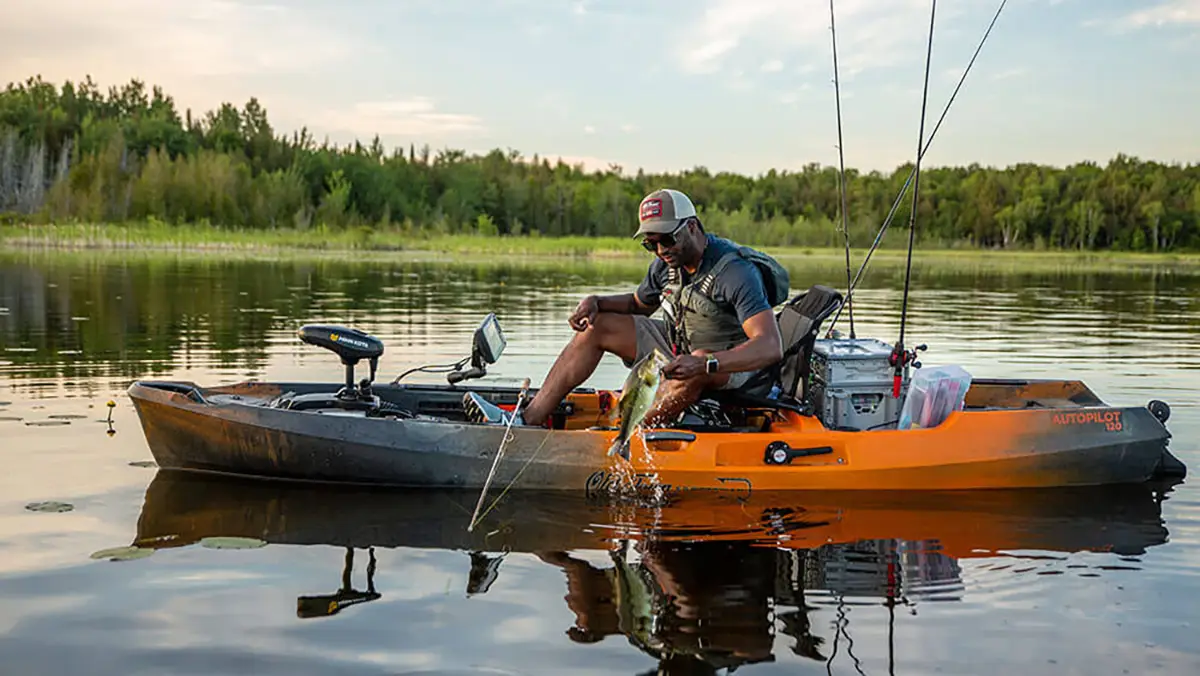
Apparel
Hat
While very simple in nature, the fishing hat that provides cover for your head can make a huge difference in how your day goes on the water. They can keep you warm, dry, and protect you from the rays of the sun and those pesky bugs.
Depending on the time of year may depend on the type of hat you wear as well. Since we lose 40% of our body heat above the shoulders a good ‘ol stocking cap can fill the bill until warmer weather appears. Trapper hats are a good choice as well in extreme cold. Other fishing hats can range from traditional baseball cap, booney hat, wide brimmed straw hat, an up-downer baseball cap, or even a traditional wide brimmed caped hat.
Most kayakers I’ve seen don a traditional baseball cap these days. For the best protection you will want something that covers the neck, and gives shade to ears and nose areas. See our article on the best fishing hats!
Quick Dry Clothing
When paddling to your fishing spot you are bound to perspire along the way which is going to release moisture into your clothing. Wearing clothing that dries quickly will keep you from getting cold as heat is transmitted from your body. Avoid cotton as much as possible. Synthetic clothing will usually keep you warm even if you get wet. You should dress for the water temperature, not necessarily for the air temperature. Layers are best. Clothing should be comfortable so that you can move freely. Colder temperatures may require a dry suit.
Rain Poncho
Ponchos can offer protection from wind and rain. They are usually made from a single piece of material and can be easily stored when not used on the kayak. They will cover most of your body in the kayak.
Water Shoes
In any sport or activity, having footwear that helps protect your feet and give you a chance to give your best performance is vital. There are a variety of specially made water shoes that can withstand those sharp rocks and not slip on those slick surfaces. They are very lightweight and made with durable outsoles to withstand any type of environment.
Buff
A fishing neck gaiter, or “a buff” as it is commonly called and made of breathable material and very lightweight, can help keep the UV rays off of your face and ears. They can also help when insects are flying around your head. You can also cool off real quick by dipping it in the water and securing it around your neck on a hot afternoon. Check out the different styles from Buff.
Fishing Gloves
Gloves can not only protect you from the sun’s UV rays but also protect your fingers from cuts from line and fish spines which can easily prick your hands and fingers. There are many types and one of the most popular are the fingerless gloves. Fish should not be handled with dry gloves so it is a good idea to wet them before handling a fish after you catch it. And one more thing, they can help you avoid developing blisters when paddling your kayak. Checkout our review of Fish Monkey Gloves
Sunglasses
Glare from the water surface or sun can strain your eyes and interfere with your vision. These glasses can help you see into the water if there is clarity and look for signs that will help you catch more fish. They can also protect your eyes from projectiles, branches, and UV rays.
Although they can be a little more pricey, these lenses would be a great choice when spending hours on the water. All the popular brands and best models can be found in our Best Fishing Sunglasses round-up.
Storage
Dry Bag
Having a dry bag handy can be one of the most important items you will need on your kayak as it will keep your extra clothes and other gear dry in case of rain, or a tipped kayak. It is always a good idea to keep an extra towel and clothes in a dry bag on your vessel. We like the Simms Dry Creek Dry Bag.
Small Waterproof Case
A small clear waterproof case is a good idea to keep your wallet, keys, or any other valuable personal items in the event of a capsized kayak. They will also usually float and offer a carry strap as well.
Kayak Crate
One of the most essential items you can have on your kayak which helps keep your tackle, rods, and other items organized. Some are modified milk crates with rod holders attached. These can easily be bungied down on the rear part of your kayak and easily reached when exchanging rods or getting a new lure out of your tackle box.
One of the more recent innovations to the crate was made by YakAttack, a company known for creating accessories for any model of kayak. They have created a hard plastic crate that arrives as a kit and is assembled by the angler. The panels are made of injection-molded stiff plastic. There is a lid to the crate with simple latches that easily secure the hatch to make this box waterproof and all contents secured inside.
Rod holders can be attached along with bungee cords to hold and organize contents. This is a very durable setup and seems to be a very popular accessory by most kayak anglers these days.
The Black Pak Pro Kayak crate is lightweight and hard-sided, but holds lots of gear, rods, and keeps your fishing items dry during your trip.
Rod Holders
Having a rod holder attached to your kayak can save you much grief when the unexpected happens such as a rollover or a tree catches your rod as you pass underneath while moving on the water. There are a myriad of types of rod holders. Some, like described above can attach directly to your kayak crate or you can use slide tracks to attach other types. It is a good idea to have some kind of rod holder though. Some anglers carry multiple rods for a variety of presentations and the more rod holders you have available to more presentations you can carry aboard. Yak Attack makes a nice add-on rod rack for your crate.
Tethers and Tie Downs
Phone Tether
These days a phone is a necessity on the water in case of emergency and it’s use as a navigational tool. When fishing kayak tournaments it is used to record your catches and submit them to various apps that tabulate your results. As cell coverage continues to expand our safety improves as well.
Phones can sell for more than $1,000 and having a tether attached to it and your PFD will save you a lot of grief in case you drop it as they rarely survive a dive into the water.
While there are numerous choices out there on the market the Robohawk Tethering system has become a frontrunner in saving cell phones while on the water. They can be ordered online and Robohawk offers many options for your needs. Anglers like Mike McSorley of Iowa says, “For me, since I drop things a lot, I use my Robohawk tethers. I would have lost my pliers, phone, and measuring board countless times without them.
A “Donkey Leash” is also very popular among kayak anglers as Jennifer Solberg from Nebraska says, “I can tire the fish out while I get my Ketch board, identifier, and camera ready. By the time I get it on my board to take a pic it is calm.”
Safety Clips for Your Fishing Rods
You hear about kayaks flipping all the time in tournaments and inclement weather and most of the time fishing rods are not secured. The result is not good when the rods fall out of their rod tube slots and sink to the bottom of the lake. A great way to reduce this risk is using a safety clip with a short lanyard. You can either easily make these or in some cases like the Black Pak from YakAttack which has the rod clips already installed.
Rope or Non Stretch Line
There are many reasons to carry a rope on board with you and most likely the number one purpose would be for towing. A good marine rescue grade polypropylene rope that is strong in a diameter of 8-12 mm would be best.
Fishing Tools and Accessories
Pliers
Removing hooks from a fish’s mouth that are difficult to remove by hand are one reason to have a pair of fishing pliers available on your kayak. Especially if you catch a fish that has a mouthful of sharp teeth. Sometimes hooks need to be bent back to their original setting as well and lines may need to be cut or crimped. Be sure to either have a set of floating pliers or a tether attached so you don’t lose them to the drink.
Kayak Knife
While on or near the water you never know what you might encounter and having a kayak knife can make a big difference in how you work through the circumstance. You may need to cut an anchor line, perform a rescue, or fend off a critter. The right knife can make a huge difference in your encounter. FishUSA offers some great NRS kayak knives that will help out in any outdoor situation.
Steve Earls from Springfield, Missouri shows how he attaches his kayak knife for easy access in case of emergency.
Small Tool Kit
Having a small tool kit with you can be beneficial in case of mechanical problems. Things you can include in this kit could be a mini Phillips screwdriver, mini flathead screwdriver, open end 7/16 wrench, SAE hex key set, mini locking vice grips, various locking nuts, duct tape, lube, goo, and zip ties. Electric tape can also be very beneficial.
Backwater Paddle
A simple yet very effective tool on your vessel can be the Backwater Assault Paddle. When navigating small spaces such as the backs of creeks where you want to stay as stealthy as possible this cleverly designed hand paddle can get you positioned properly and quickly to catch those big fish lurking in these waters. Designed by a a retired U.S. Navy survival instructor this paddle will give you an added mobile ability in all situations.
Headlamp
While heading out in the dark on your kayak, a headlamp can be very useful to see better and avoid obstacles like tree trunks, stumps, branches, and rocks. They can provide enough light for you to tie knots, remove hooks from fish, and accomplish any minor tasks you encounter while out during the early morning or night. There are literally hundreds of models to choose from these days. The Petzl Actik Core Headlamp is considered one of the best out there with a max of 600 lumens.
Fish Grips / Net
Fish lip grips are a great accessory for several reasons. Of course you can lip your catch with them and especially if the fish has sharp teeth! No need for a net here. Also, you can tie a lanyard on and attach to tree branches or poles in the water to keep your kayak stable on windy days. Amazon has some offers that are reasonably priced.
Fish grips are a great way to handle bigger catfish and toothy fish. You can get a set for pretty cheap like the Bett’s Billy Bay Grab N Grip
A small net is a good option as well, especially one that floats that can be tied off or has a lanyard on the end.
Line Cutters
Anglers are bound to snag up on a submerged tree limb or a gap in rocks and if you break your line a new lure needs to be tied on. A good pair of line cutters can save you a lot of time trimming that excess line after you tie a new knot. There are numerous options out there but my favorite are the Boomerang Snip Fishing Line Cutters.
Sonar Unit
Of course you can get yourself a set of eyes to see what is under the surface and that is a sonar unit. While it isn’t a must-have accessory it can come in handy for determining water temperatures, depth, structure and of course, help you find the fish. There are a multitude of options here and your local kayak dealer can help point you in the right direction to either have one installed or purchase one and easily install yourself. We’ll cover this in more detail in a follow-up piece. Most of the top brands make kayak mountable units now.
Ketch Board
Most kayak fishing tournaments whether online or live will only accept the Ketch Board as a method of measuring your fish and submitting them as an entry. These boards have made a huge impact with fishing derbies all across the country. You can either use a metal one or carbonate in most derbies. At the national level metal boards are usually used as a method to verify your catch. They are available in 26 or 32, 48, or 64 inch lengths. The most popular are the 26 inch boards and come in a variety of colors. The markings are easy to read and there are built in holes to tether your board to the kayak.
Tourney Tag
This zip enclosure helps keep your identifiers used in derbies dry, secure, and in place so you can capture a picture of your fish for submission. The clear plastic cover is made from a glare reducing material. They are made to securely fit on your board or can be worn on the wrist or forearm. They come with a fully adjustable elastic band at a minimal cost.
Stake Out Pole
Keeping your kayak in one place can be challenging at times, especially if there is a breeze blowing. One of the best ways to keep your kayak in position on shallow water is to use a stakeout pole. It can easily be stuck in the sand or mud and you can attach a lanyard to it. There are also power poles you can install on your kayak just like the bass boats use in their tournaments. They usually float and can broke down and stored on the kayak.
The SuperStick is a nice push pole and stake combination.
Anchor
An anchor can also serve as a purpose to keep your kayak in one place while fishing. There are numerous styles and models of anchors and using an “anchor trolley” can make your position on the water a little better for casting, etc. Check out this foldable anchor on Bass Pro.
External Battery Source-Power Box
If you are running anything electronic on your kayak you will need some type of battery power. The lightest and most efficient batteries out there are the lithium models. Lead batteries work but they are very heavy and will add weight to your kayak. A power box is a nice option as well. Ice Hole Power offers a power box where you can keep your battery dry and charge your phone or other items at the same time. We like the Dakota Lithium Power Box as well.
Miscellaneous Extras
First Aid Kit
When hooks get caught up in your fingers or hand or a fish’s sharp barbs puncture your skin, having some basic medical supplies can go a long way in treating any accident you encounter on the water. This will keep you fishing when you are prepared for any mishaps that might occur.
A great first aid kit is the Angler Aid Safety Kit which is loaded with all you need for any basic emergency. You can also create your own based on your needs as they occur.
Hydration
Proper hydration is essential while kayak fishing. Whether you are on the water a couple of hours or all day, hydration can extend your time on the water so you can enjoy your exciting trip and ensure this enjoyment to the fullest. It is important to drink plenty of water before, during, and after your kayak fishing trip. Be sure to stow plenty of water for the entire trip.
One way I like to have plenty of cold water available is to freeze my water bottles before taking the trip. They will easily thaw out during the day. They also help keep my food refrigerated at the same time so I don’t have to bring along those freeze blocks that add weight to my kayak. I usually bring a couple already thawed out and two to three more for the rest of the day.
A hydration pack will also work and there are numerous choices at your local outdoor store.
Sun Screen
When your skin is exposed to the Ultraviolet rays of the sun (UV) it can cause damage over time so we need to cover up or use sunscreen while on the water if possible. This natural energy caused by the sun also reflects off of the water. The more cover the better and a small container is easy to store on your kayak.
Bug Protection
When kayak fishing you are most likely going to deal with insects. And a lot of them bite or sting! An item to strongly consider would be some Deep Woods Off Insect Repellent VIII Dry or another popular repellent is Citronella. You can easily apply both and this will at least make your trip more comfortable when these pesky critters are present.
Snacks and Lunches
Having snacks and a sandwich or two will keep you going on an all day trip or derby. A good lunch bag or cooler will keep them fresh and easily accessed on your kayak.
Padded Seat
It’s only been a few years since the kayak seat has been engineered to give a more comfortable ride. Early models only had a molded section in the kayak and the seat was a small thin pad in the center. Even with that new comfort sitting in a kayak for several hours while fishing can really numb your rear end. For added comfort an angler can add a small pad.
One pad in particular that has most recently become very popular is the Kayak Kushion which is priced to fit any budget. This Kushion is designed to give you comfort all day long and even has a lumbar feature and can be used as a back rest as well.
Hand Warmers
Depending on where you live and the time of year you are fishing, these instant little warmers can help keep your fingers from suffering after getting wet from catching fish.
Microfiber Towel
At the same time, having a nice dry towel available to keep your hands dry after handing fish or paddling. I usually take a couple along as you will most likely use them frequently.
Kayak Cart
Some kayaks are very heavy and especially when you load all of your gear on them. Kayak carts come in all shapes and sizes. They can help you transport your kayak to the water very efficiently. Some carts are made exclusively for a particular brand of kayak while the “Boonedox” cart can fit just about any kayak out there and are very portable to take along with you on any kayak fishing trip. Railblaza makes a nice cart called the C-Tug Kayak and Canoe Cart that works with most models.
Also, read our article on how to transport a fishing kayak.
Be prepared for anything!
The final thing could fit in multiple categories, but it might be best to make it a necessity. Toilet paper … that’s right! You just never know what might happen out there on the water. Some anglers like Joshua Boothe of Missouri even recommend baby wipes.
Summary
We have listed and described numerous items both essential and suggested for your kayak fishing adventures here in this article. You may or may not need every item listed here. But having these items can save you a lot of grief over time. In fact, many of them here could save your life or somebody else’s while on the water.
Our hope is that you are always safe on the water and that you have a chance to enjoy catching fish from your kayak for years to come!
